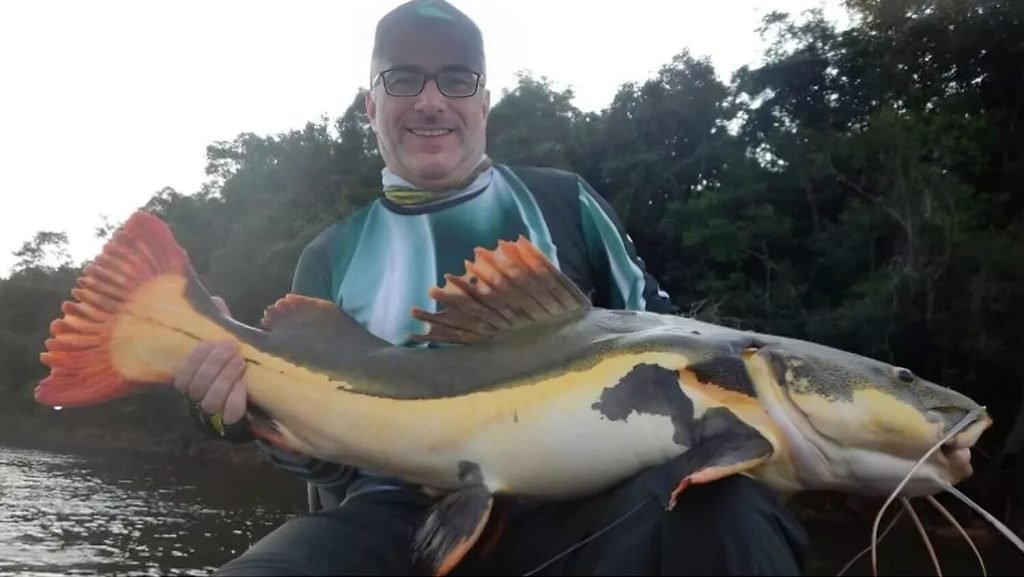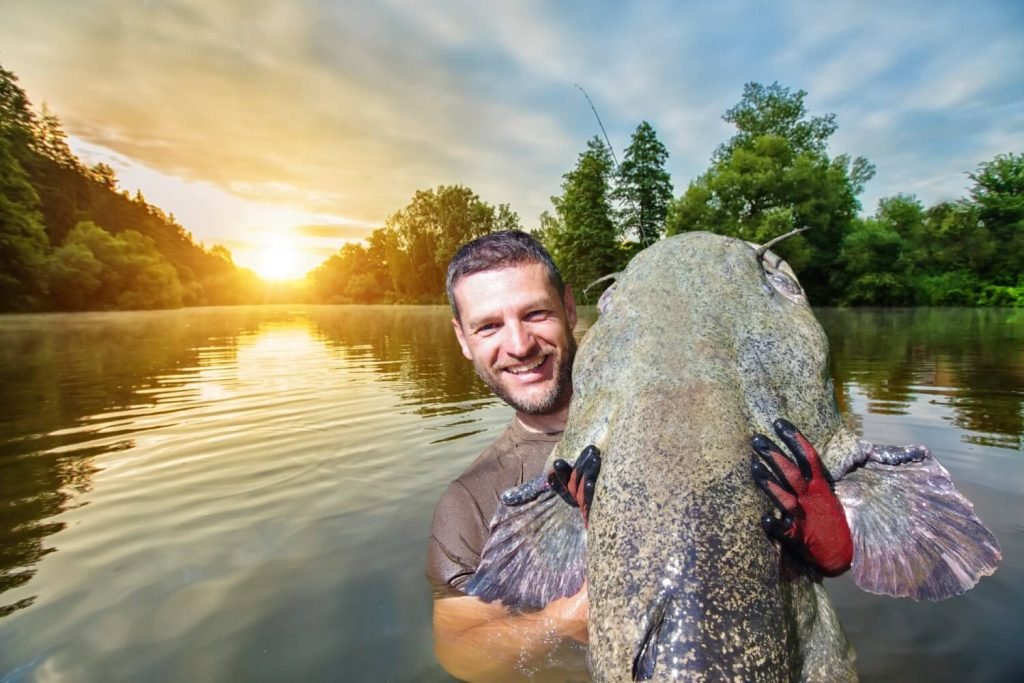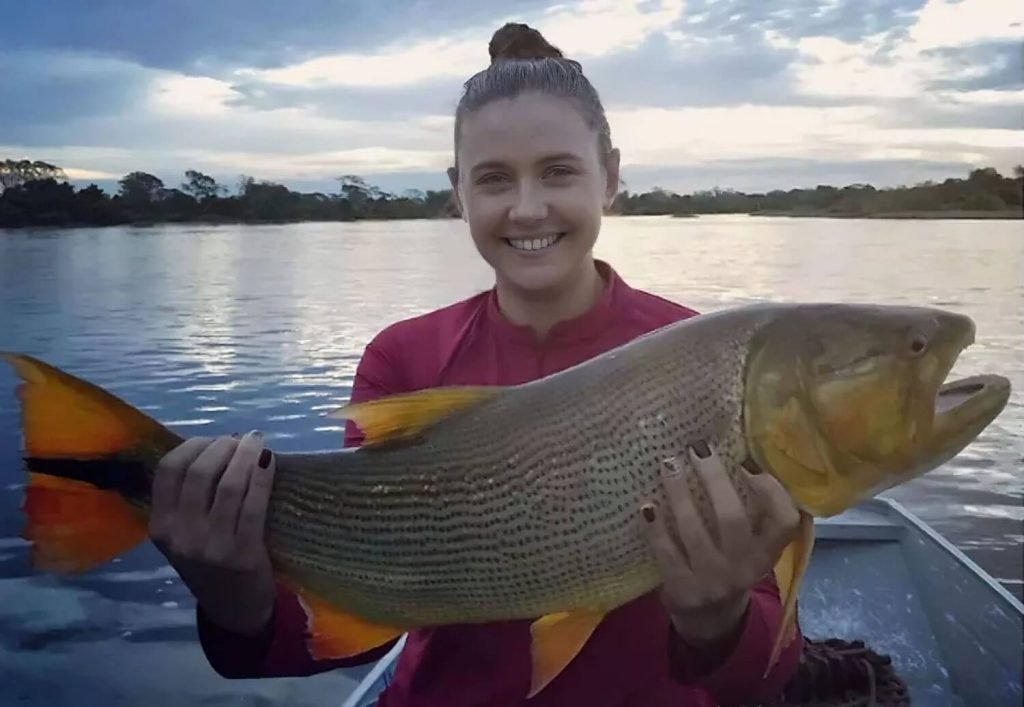The Jofre River is one of the many rivers that run through the beautiful Pantanal landscape, one of the largest wetlands in the world. Located in the state of Mato Grosso, Brazil, the Jofre River is a privileged region for sport fishing and offers a unique experience for anglers looking to enjoy the exuberant nature and diversity of aquatic species.

Aquatic Diversity: Treasures of the Jofre River
Fishing in the Rio Jofre is known to be exciting and rewarding, with the possibility of catching several species of freshwater fish. Among the most common species found in this region are dorado, pacu, piranha, barbado, cachara, piavuçu, as well as other species that inhabit the crystal clear waters of the river.
Dorado Fish: Jewel of Jofre River Fishing
- The dorado is, without a doubt, one of the highlights of fishing in the Jofre River. Known for its strength and ferocity, the dorado is a brave and resilient fish that puts up a thrilling fight when caught. It is one of the most coveted species by sport fishermen, and the region is considered one of the best places to find it.
Pacu Fish
- In addition to dorado, the Jofre River offers opportunities to fish for pacu, a silvery-scaled fish known for its strength and endurance. Piranhas are also common in this region, but it is important to remember that fishing for these animals is prohibited, as they are ecologically important species in the aquatic ecosystem.
Sport fishermen who visit the Jofre River are graced by the scenic beauty of the Pantanal. This place stands out for its vast wetlands and abundant wildlife. While fishing, it is possible to spot birds such as macaws, toucans, and herons. In addition, mammals such as capybaras and caimans can be observed, providing an unforgettable natural spectacle.
To ensure the conservation of the Jofre River and its species, it is essential to follow local regulations. Respecting minimum catch sizes and adopting responsible fishing practices is a must. Fishermen should remember to dispose of garbage properly. It is also essential to avoid any type of water pollution, thus contributing to the conservation of this important ecosystem.
In summary, fishing in the Jofre River offers a unique experience. It combines the thrill of sport fishing with the contemplation of the exuberant nature of the Pantanal. The Jofre River offers prized fish species, breathtaking scenery and an abundance of wildlife. It is an unmissable destination for anglers looking to enjoy unforgettable moments in one of the richest and most preserved ecosystems in Brazil.
How to get to Rio Jofre

If Rio Jofre is located in the Pantanal, one of the main ways to get there is by plane. There are airports in cities near the Pantanal, such as Cuiabá, in the state of Mato Grosso, or Campo Grande, in the state of Mato Grosso do Sul. From there, you can hire a transfer service or rent a car to drive to the Pantanal region.
The condition of the access roads to the Pantanal can vary depending on the time of year and rainfall. It is crucial to check road conditions before traveling, especially if you are going to more remote areas.
Access by Boat to Isolated Areas of the Pantanal
- In addition to access by plane and car, some isolated areas of the Pantanal are accessible by boat. Rivers play a crucial role as an important means of transportation in the region. In this case, it is possible to hire local boatmen. They know the region and can make the river journey to the desired destination.
It is always advisable to plan ahead and seek up-to-date information on how to get to a particular place, especially in remote areas such as the Pantanal. Being crucial, one must prepare for the weather and environmental conditions of the region. This will ensure a safe and pleasant experience when arriving at the Jofre River.
If you have more precise information about the location of Rio Jofre or need more detailed information about how to get to a specific region of Brazil, I recommend that you consult updated sources or seek the help of local guides. This way you will be able to fully enjoy the natural beauty of Brazil and explore the charms of this river.
Where in Brazil is the Pantanal located?

The Pantanal is one of the richest and most diverse natural regions in Brazil. It is famous for its exuberant biodiversity and vast wetlands. It is located in central-western Brazil, mainly encompassing the states of Mato Grosso and Mato Grosso do Sul. It also extends into small areas of northern Paraguay and Bolivia.
With a total area of some 150,000 to 200,000 square kilometers, the Pantanal is considered the largest wetland in the world. UNESCO has also declared it a Natural World Heritage Site and Biosphere Reserve. Its flat topography characterizes the region, with a complex network of rivers, lagoons, marshes, and seasonal wetlands. This configuration makes it a favorable environment for wildlife.
Seasonal Cycle and Climate of the Pantanal
- The Pantanal’s climate is predominantly tropical, with distinct dry and wet seasons. During the rainy season from November to March, heavy rains flood much of the region. This phenomenon results in the formation of huge lagoons and swamps in the area. During the dry season, which runs from April to September, the water level drops significantly. This drop exposes vast plains and allows animals to concentrate in more restricted areas.
The abundant biodiversity of the Pantanal
- The biodiversity of the Pantanal is impressive, as it is home to a great variety of animal and plant species. The region is home to countless birds, such as macaws, toucans, herons and eagles. It is also home to a diversity of mammals, including capybaras, jaguars, jaguars, jaguars, jaguars, maned wolves and anteaters. The Pantanal is famous for its abundance of fish, which makes it a popular destination for sport fishing.
The preservation of the Pantanal is fundamental to conserving the region’s rich biodiversity. It also contributes to the maintenance of the natural ecosystems that depend on its integrity. The Pantanal faces threats, such as land conversion for agriculture and exploitation of natural resources. This highlights the continued need to implement protection measures and conservation policies in the region.
The Pantanal provides visitors with the opportunity to explore one of the world’s most valuable and impressive ecosystems. Wildlife watching, sport fishing and ecotourism are some of the activities that attract people from all over the world to this unique area of Brazil. These activities provide an unforgettable and inspiring experience in direct contact with nature.





